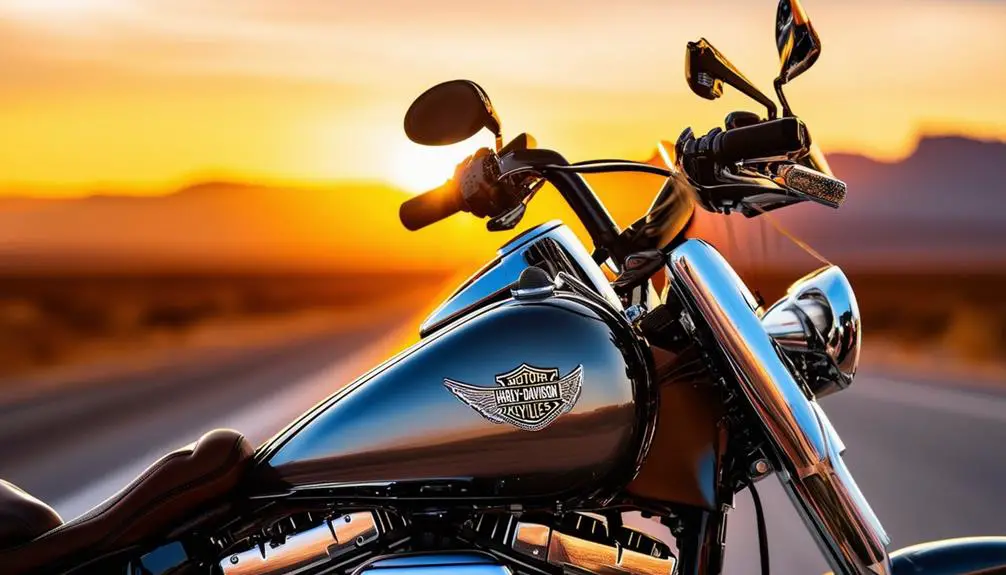Harley motorcycles are known for their robust engineering, but like all machines, they are subject to wear and tear, and certain components can develop issues over time. A commonly reported challenge for Harley owners is the occurrence of oil breather problems. The oil breather system is a critical part of the engine that helps maintain proper air pressure and prevents oil from escaping into places it shouldn’t be, like the air cleaner or onto the bike itself. When the system malfunctions, it can lead to oil leaks, reduced engine performance, and a messy cleanup.
The symptoms that something might be amiss with the oil breather system can range from oil spots under your parked motorcycle to a noticeable oil mist or droplets coming out of the breather. If you’re encountering persistently low oil levels without any obvious leaks, or if there’s excessive oil emerging from the air cleaner, it’s wise to inspect your breather system. Proper diagnosis can prevent further complications, and understanding the common causes of these issues can help you pinpoint the problem more effectively. Regular maintenance and timely replacement of defective parts, like breather valves or tubes, can safeguard the longevity of your bike’s engine and ensure a smooth ride.
Key Takeaways
- Proper maintenance of the oil breather system is essential for Harley performance.
- Recognizing signs of breather issues can prevent more serious damage.
- Solutions include inspecting and replacing damaged breather components.
Understanding Harley Oil Breather Systems
The Harley oil breather system is crucial for maintaining appropriate pressure inside your engine’s crankcase, enhancing performance, and preventing oil leaks. Below, you’ll learn about the essential components, their roles, and common challenges that may arise with breather systems.
Components and Functions
Your Harley’s oil breather system comprises several key parts that each play a vital role:
- Breather Gear/Breather Valves: These allow air and crankcase gases (blow-by) to exit the crankcase without letting oil escape.
- Crankcase Breather Hose: This hose channels the gases away from the crankcase, typically to the air filter assembly.
- Oil Tank: The reservoir for your engine oil; it’s critical for the breather system as it interacts with the air filter and breather components to maintain proper oil level and pressure.
Role in Engine Performance
The breather system performs a crucial role in ensuring optimal engine performance:
- Pressure Regulation: By venting crankcase pressure, the breather system helps to prevent gasket leaks and oil starvation.
- Reduction of Blow-by: It helps reduce blow-by gases, which, if left unmanaged, can adversely affect engine performance.
Common Issues with Breathers
Here are some issues that you might encounter with oil breather systems:
- Oil Leaks: If the crankcase is overfilled with oil or the breather components are faulty, oil may leak through the breather and into the air filter or onto your bike.
- Blocked Breather: Clogs in the breather or hose can cause increased pressure, which often leads to leaks and degraded engine performance.
- Misalignment or Malfunction: Misaligned breather gears or malfunctioning valves can impede the system’s functionality, compromising the balance of crankcase pressure.
By familiarizing yourself with these systems, you can better maintain your Harley and keep it running smoothly.
Symptoms of Oil Breather Problems
Detecting issues with your Harley’s oil breather early can save you from potential engine damage. Keeping an eye out for the common symptoms can guide you toward timely maintenance.
Visible Oil Leaks and Drips
When your motorcycle’s oil breather is malfunctioning, oil leaking is often the first indicator. You might notice oil emerging from the crankcase breather, creating puddles beneath your bike or oil stains on your engine. Regularly check for:
- Drips on the ground where you park.
- Oil residue on engine parts or the air cleaner.
Decreased Engine Performance
If you’re feeling a lag in power or your bike seems less responsive, the breather issue might be to blame. Pressure builds up when the breather isn’t working correctly, impacting engine performance. Look out for:
- Unexplained power drops when accelerating.
- An overall sluggish response from your engine.
Abnormal Engine Sounds or Smells
A faulty oil breather can lead to increased engine pressure, which in turn may cause worn piston rings and other internal damages. This can manifest as:
- Unusual noises, such as knocking or tapping.
- Odd smells, indicating oil burning that shouldn’t be occurring.
Diagnosing Harley Oil Breather Problems
Your Harley’s performance depends greatly on a properly functioning oil breather system. When diagnosing oil breather problems, a methodical approach increases the likelihood of pinpointing the exact issue.
Oil Leak Inspection
To start with, check for any signs of oil leakage around the air cleaner and breather system. Smaller leaks may appear as slight residue or seepage, while more significant leaks can present as drips or pooling oil. Ensure your oil tank is not overfilled as this could pressurize the system and cause oil to escape from the breather.
Checking Crankcase Pressure
Elevated crankcase pressure can force oil out of the breather. To diagnose, inspect the oil fill level and start the engine; place your hand near the breather outlet to feel for excessive exhaust pressure escaping, indicating a potential pressure build-up.
Inspecting Breather Components
Finally, check the breather components for damage or clogging:
- Breather hose: Inspect for kinks, blockages, or signs of wear.
- Breather gear: Located within the cam cover, inspect for proper alignment and wear.
- Cam cover gasket: A compromised gasket can lead to oil leaks and must be intact and properly seated.
Addressing these factors during diagnosis helps to identify and resolve oil breather issues, enhancing your Harley’s engine performance and longevity.
content continues below
Quick Navigation for Related Problems
-
Harley Davidson Oil Leaks: Quick Fixes for a Sealed Ride
-
Harley Davidson Excessive Vibration: Tips to Smooth It Out
-
Harley Engine Knocking Sound: Causes and Fixes
-
4 Most Annoying Harley Davidson Throttle by Wire Problems
-
5 Harley Davidson Overheating Problems That Ruin Your Ride
-
3 Harley Davidson Brake Light Switch Problems To Be Aware Of
-
Total Harley Davidson Starter Problems Troubleshooting Guide
-
Harley Davidson Speedometer Not Working: Tips, Tricks & More
-
Harley Oil Breather Problems: Quick Tips, Tricks & More
-
Harley Oil Sumping Fix: Quick Solutions for a Smooth Ride
-
Harley Davidson ABS Light Flashing: Tips, Fixes, and More
-
Harley Davidson BCM Problems: Navigating Common Issues
-
Is Your Harley Clicking When Trying to Start? Help’s Here!
-
Harley Davidson Fuel Pump Problems: Tips, Tricks & More
-
3 Harley Davidson Fuel Injection Problems To Be Wary Of
-
Harley Bad Compensator Symptoms: Recognizing Early Signs
-
6 Reasons Why Your Harley Has Power but Won’t Start
-
Your Harley Lost All Electrical Power? Here’s What To Do
-
3 Harley Davidson Transmission Problems That Shift Your Mood
-
4 Harley Hydraulic Clutch Problems, Their Causes and Fixes
content resumes
Common Causes of Oil Breather Issues
When your Harley’s oil breather isn’t functioning properly, it’s often due to a few common issues. Understanding these can help prevent the frustration of leaks and other related problems.
Incorrect Oil Levels
Check Your Oil Levels: It’s essential to ensure your oil tank isn’t overfilled or underfilled. Use the dipstick to verify that the oil level is within the recommended range. Excess oil can lead to leakage or other failures in your oil breather system.
Defective Seals and Gaskets
Inspect Seals and Gaskets: Faulty seals, such as the cam cover gasket, can cause oil to escape. A worn gasket is a potential culprit behind oil leaks. Replacement of these components might be necessary to maintain the integrity of your engine’s oil system.
Worn Engine Components
Assess Engine Wear: Worn piston rings can lead to excess oil entering and leaking from the breather. If your engine has high mileage, consider evaluating the condition of these and other critical components to prevent oil from escaping where it shouldn’t.
Overlooked Maintenance Issues
Keep Up with Regular Maintenance: A clogged air cleaner could push oil out of the breather. Regular maintenance, including checking your oil filter and replacing it when needed, helps keep oil in check. Also, consider investing in a breather kit designed to help with oil management.
Solutions and Preventative Measures
Managing Harley oil breather problems effectively requires a combination of regular upkeep, enhancements to breather components, and expert interventions when necessary. Let’s dive into these approaches to keep your motorcycle in optimal condition.
Regular Maintenance
To avoid oil leakage and ensure the longevity of your motorcycle, regular maintenance is essential. Check and clean your air cleaner regularly, as a clogged air cleaner can cause undue pressure, leading to oil breather issues. It’s vital to replace your oil filter as scheduled and monitor your oil levels carefully; overfilling can cause oil to be forced out through the breather.
- Check the air cleaner: Monthly
- Oil filter replacement: As per service guidelines
- Oil level check: Before every long ride
Upgrading Breather System Components
An upgrade to your breather system can minimize the risk of oil breather problems. Installing a high-quality breather kit can help maintain correct airflow and pressure within the engine. Also, consider replacing the breather hose and cam cover gasket if they show any signs of wear or damage, as they can be common culprits for oil leaks.
- High-Quality Breather Kit
- Durable Breather Hose
- Robust Cam Cover Gasket
Professional Diagnosis and Repair
Sometimes, the best solution is to seek professional help. If you notice persistent oil leakage or other abnormal symptoms, visit an authorized HD dealer or a reputable motorcycle repair shop. They can properly diagnose issues with sophisticated tools and offer repair services that are tricky to handle on your own, like replacing a malfunctioning oil pump.
- Authorized HD Dealer: For genuine parts and expert technicians
- Motorcycle Repair Shop: For aftermarket upgrades and personalized fixes
By staying on top of maintenance, considering upgrades when necessary, and not hesitating to consult professionals, you can keep oil breather problems at bay and enjoy smooth rides on your Harley.
Specific Considerations for Model Variants
When troubleshooting oil breather problems on your Harley-Davidson, remember that different models may have unique challenges. Below, you’ll find specific considerations for various Harley model variants that focus on their respective oil breather systems.
Touring and Softail Models
Your Touring or Softail model can experience breathers issues if the oil is overfilled or if there’s a clog in the ventilation system. It’s essential to check:
- Oil levels: Ensure you’re not overfilling your oil, which can cause leaking from the breather.
- Breather hoses: Inspect these for clogs or damage. They help vent excess crankcase pressure.
Tip: For these models, it’s a good practice to periodically check the breather hoses and replace them if you notice any wear or damage to prevent breather problems.
Milwaukee-Eight Engines
Milwaukee-Eight engine models feature a refined oil breather system; however, you should still be vigilant:
- Oil pump: Issues with the check valve or the spring in the oil pump can lead to oil bypassing the breathing system.
- Ventilation efficiency: Improper crankcase ventilation can cause a buildup of pressure that leads to oil escaping through the breather system.
Remember: Regular maintenance can help prevent these issues, so keep up with your service schedule.
Older Harley Models
If you ride an older Harley model, you might find:
- Engine design: Older models tend to have more rudimentary breather systems which could mean more frequent attention is needed to prevent oil from sumping in the primary case.
- Primary case and transmission: Over time, the seals in the primary case and transmission can wear down, leading to potential breather problems.
Note: On these models, regularly inspect and replace any worn-out seals to maintain the integrity of the oil breather system.








Leave a Reply
You must be logged in to post a comment.